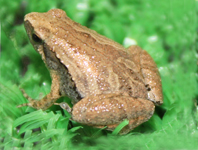Abstract
Trachylepis elegans and T. gravenhorstii are two of the most widespread reptiles in Madagascar, inhabiting a wide variety of habitats. Previous studies have indicated a considerable mitochondrial DNA (mtDNA) variation within these species, but the geographic distribution of the major haplotype lineages is poorly known. Herein we analyse the phylogeography of these lizards based on 107 sequences of the mitochondrial cytochrome oxidase subunit I gene, 101 of which newly determined. As in previous mtDNA assessments, T. elegans and T. gravenhorstii were not reciprocally monophyletic, although recent analyses including nuclear markers indicated their probable monophyly, respectively. The main lineages within T. gravenhorstii were found in strict allopatry and could be divided into a subclade of roughly northern and eastern distribution (lineages 1 and 2) and a subclade of roughly southern and western distribution (lineages 3, 4a, 4b, and 5, plus T. elegans). Our data serve to identify more precisely the probable contact zones among T. gravenhorstii lineages. The two main mtDNA clades (represented by lineages 2 and 3, respectively) can be expected to come into close contact in the area of the upper Mangoro river and Alaotra Lake, and (lineages 2 and 4a) in the Southern Central East between Mananjary and Ranomafana. Future studies intensively sampling these contact zones have the potential to assess hybridization and admixture among these lineages, and to test whether they are deep conspecific lineages of T. gravenhorstii as currently understood, or might represent distinct species.

